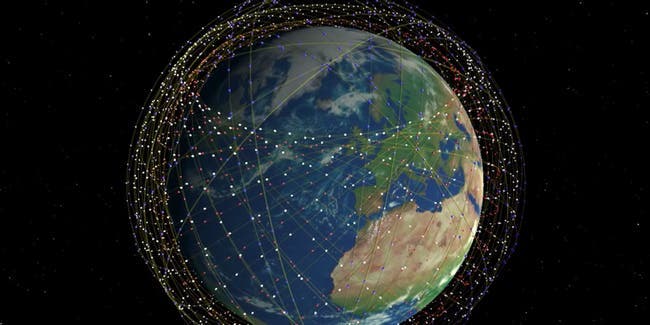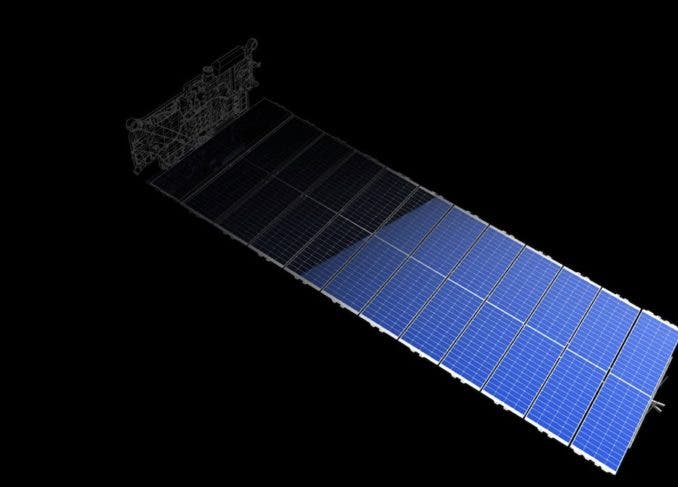
On Monday, Jan. 6, at 9:19 p.m. Eastern, a Falcon 9 rocket took off from Cape Canaveral, Florida launching 60 of its own Starlink broadband satellites. This was the third batch of satellites part of the Starlink network meant to beam internet from space to even the remotest locations on Earth — for a price. With this latest batch, SpaceX has now officially become the world’s largest operator of a commercial satellite constellation.
The multi-billion-dollar Starlink constellation will essentially be Wi-Fi in space. The ultimate goal is to operate more than 10,000 of the tiny satellites that will blanket the planet, beaming high-speed broadband internet to virtually any inhabited location on Earth.
This latest batch of satellites is currently in a 290-kilometer orbit where SpaceX engineers will closely monitor them and perform checks before raising them to a final 550-kilometer orbit. At this low altitude, the satellites can beam an internet connection with low lag. And, if something goes wrong and SpaceX loses control over one of its Starlink satellites, the object will eventually passively de-orbit and re-enter Earth’s atmosphere rather than turning into space junk.

In total, SpaceX now operates 182 Starlink satellites, including two prototypes that the company launched nearly two years ago. The previous record-holder for the world’s largest commercial satellite constellation, the company called Planet, operates 150 remote-sensing satellites.
Most of us take the internet for granted, so it’s easy to forget that roughly 40% of the world’s population still lack internet access in 2020. Bringing billions of people online will deliver immense societal and economic value by enabling new businesses, expanding markets and jobs, and supercharging education.
Elon Musk’s latest big wager, however, is extremely risky — but by now we’ve grown accustomed to the entrepreneur’s knack for overly ambitious projects.
Some of the challenges include launching Starlink satellites every two weeks in order to reach the company’s goal of operating up 12,000 satellites. In fact, Space has filed paperwork with the United Nations’ International Telecommunications Union for another 32,000 satellites.
Broadband won’t be magically beamed to your phone from space. Instead, to access satellite internet, a Starlink customer will have to connect to a terminal. This means that a ground-based infrastructure consisting of various receivers and antennas will also have to be built from scratch.
In typical SpaceX fashion, these terminals will be designed in-house at the company’s headquarters in Hawthorne, California. SpaceX’s chief operating officer, Gwynne Shotwell, said that the company’s engineers are already working on a prototype, but it might take many years before Starlink becomes operational. But whether or not the company will be able to turn a profit remains questionable.
SpaceX also has competition. UK-based OneWeb is seeking to deploy its own constellation of 650 satellites while Amazon wants to deploy Kuiper, a constellation of 3,200 broadband satellites.
And while the world could stand to benefit from such a venture, science could run into some serious trouble because of Musk’s web of broadband in the sky.
Elon Musk’s astronomical photobomb
Astronomers surveying the sky for distant objects like far-away galaxies often have to deal with the nuisance of a satellite zipping through an observatory’s field of view. Such an occurrence doesn’t ruin the observation because astronomers are able to digitally remove the satellite speck with a bit of effort. But you know what ruins an observation? A streak of light formed by more than a dozen Starlink satellites. Just take a look at the image below.

Right now, Starlink isn’t much of a problem to astronomy but if tens of thousands of satellites really become operational, this could severely hamper observations.
What’s more, you won’t need a telescope to see Starlink. During twilight hours, and outside the city, you should be able to see streaks of light zipping through the night’s sky, like an artificial meteor shower. With tens of thousands of low-orbiting satellites, it will be like the sky is crawling with UFOs.
To mitigate the intrusion, SpaceX said it will treat its Starlink network with a special coating that will make the satellites less bright. For everyone’s sake, hopefully, SpaceX will think of other clever ways to make sure Starlink doesn’t ruin science while still pursuing its commendable goal of delivering high-speed internet to every corner of the globe.


